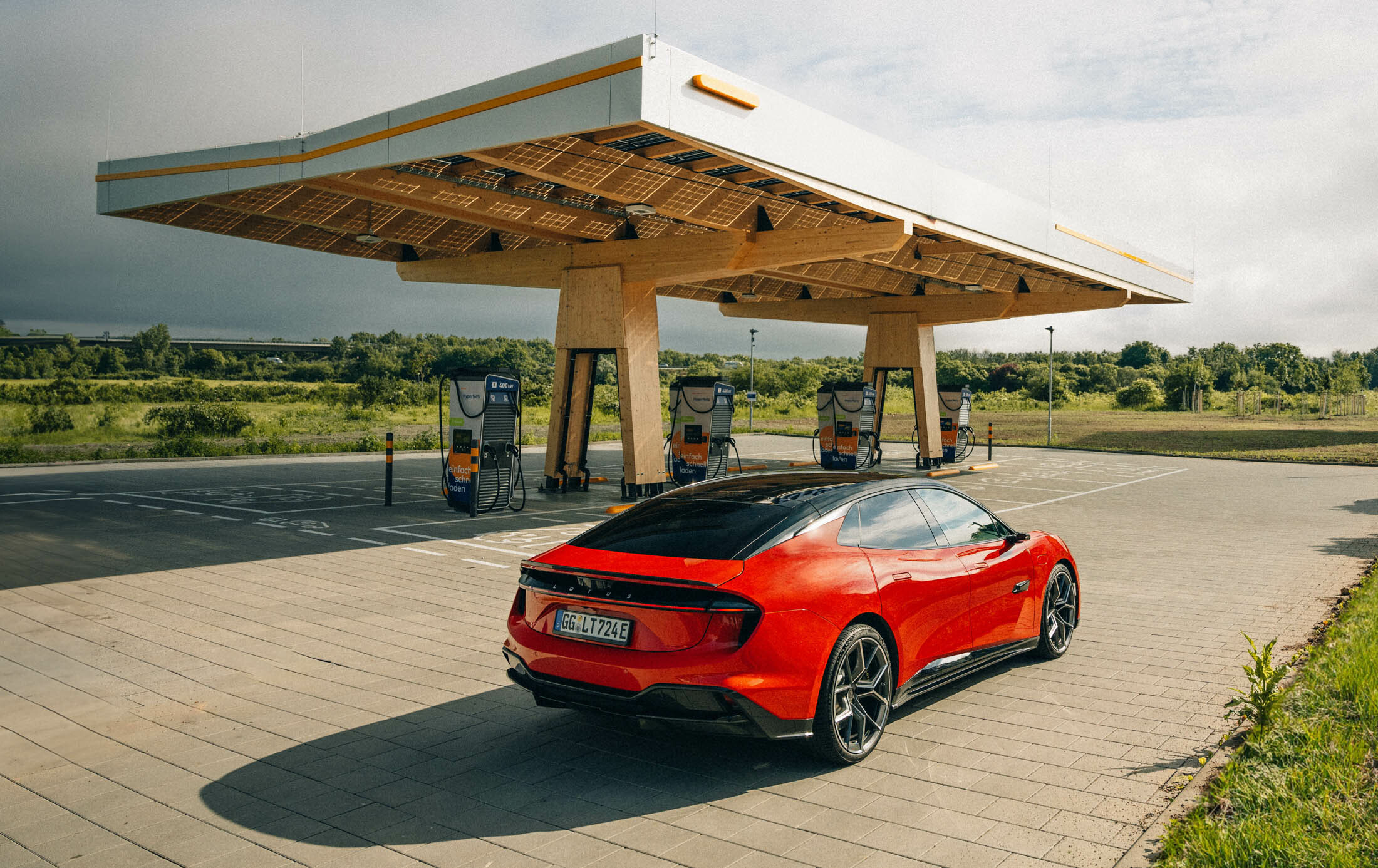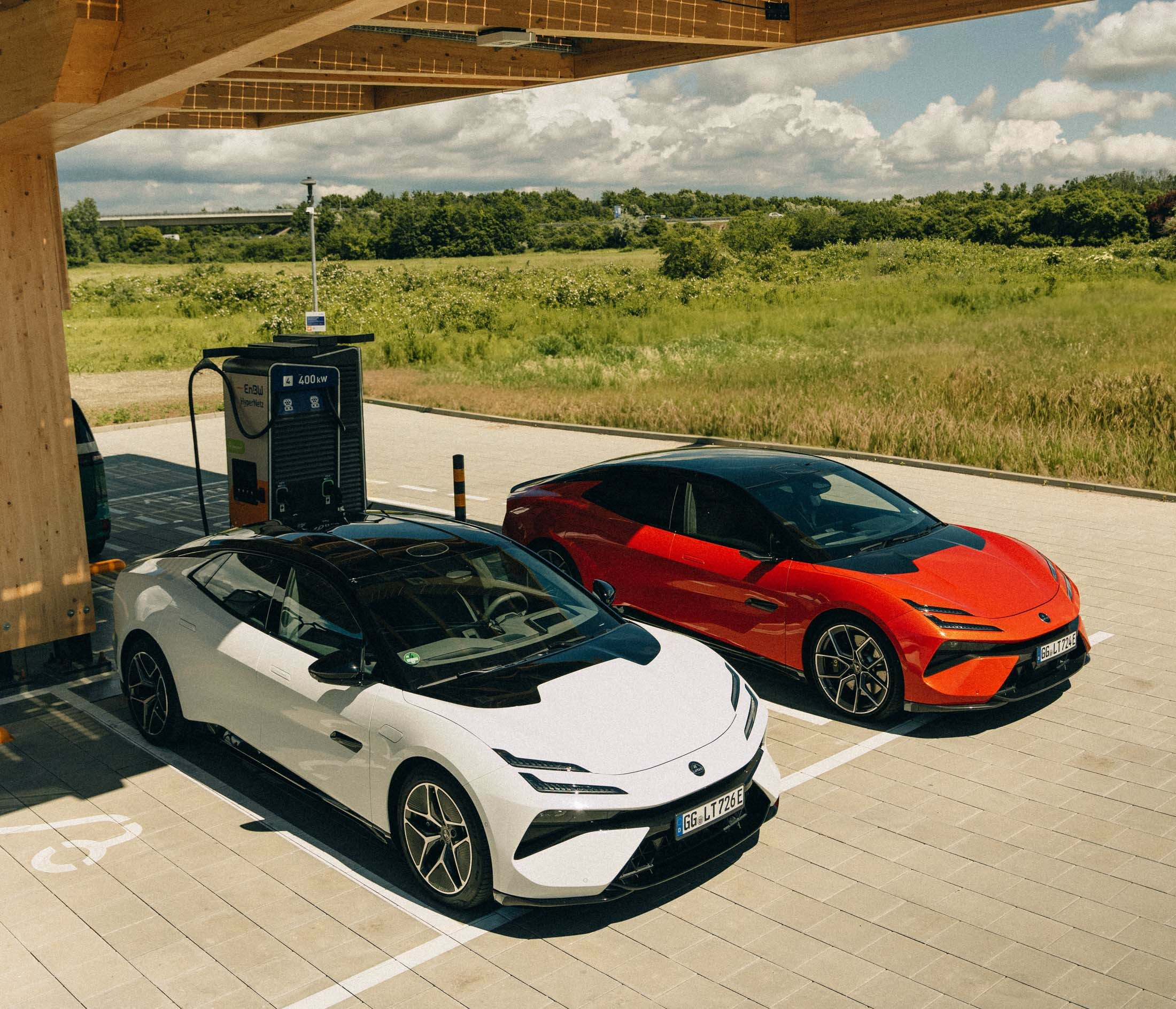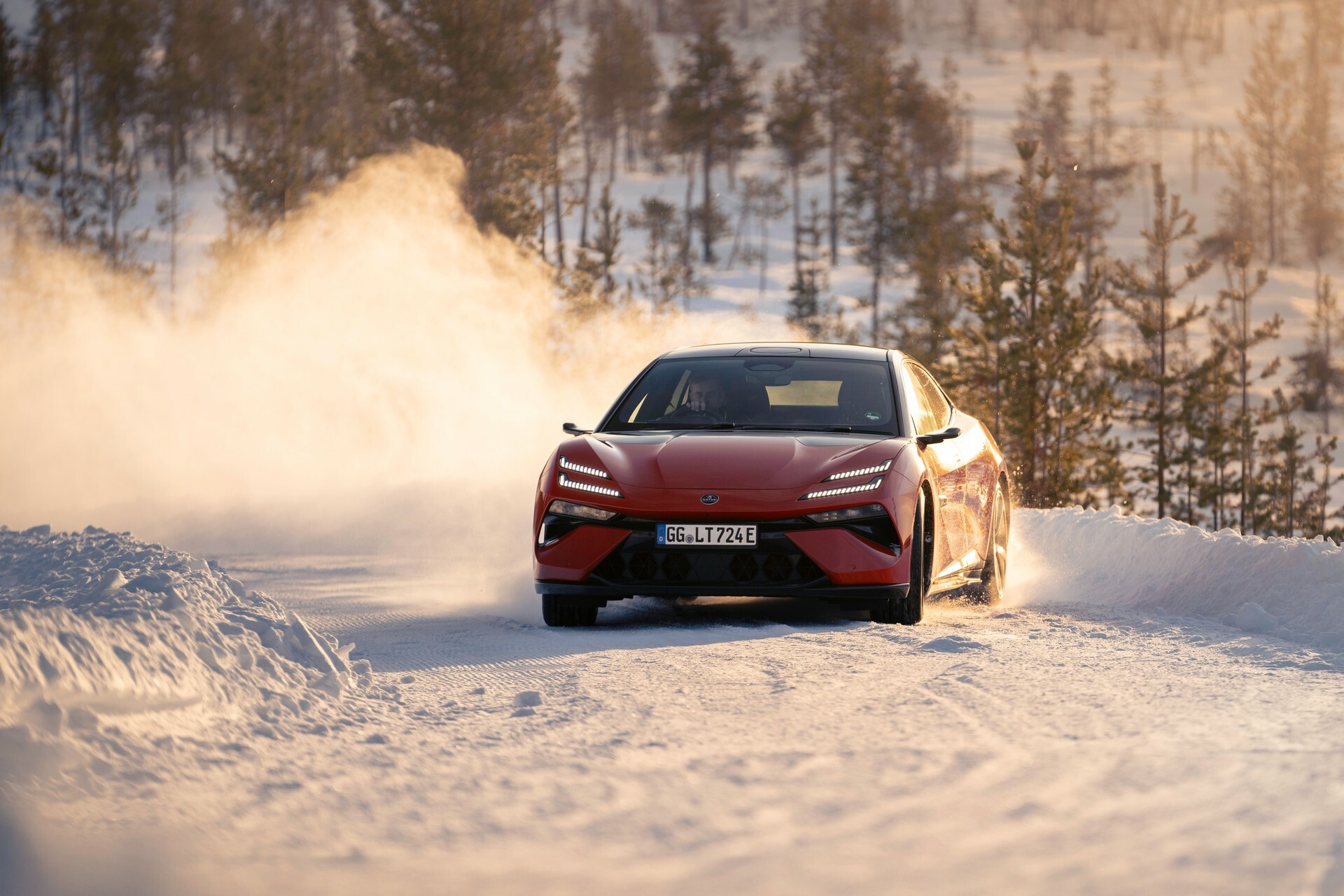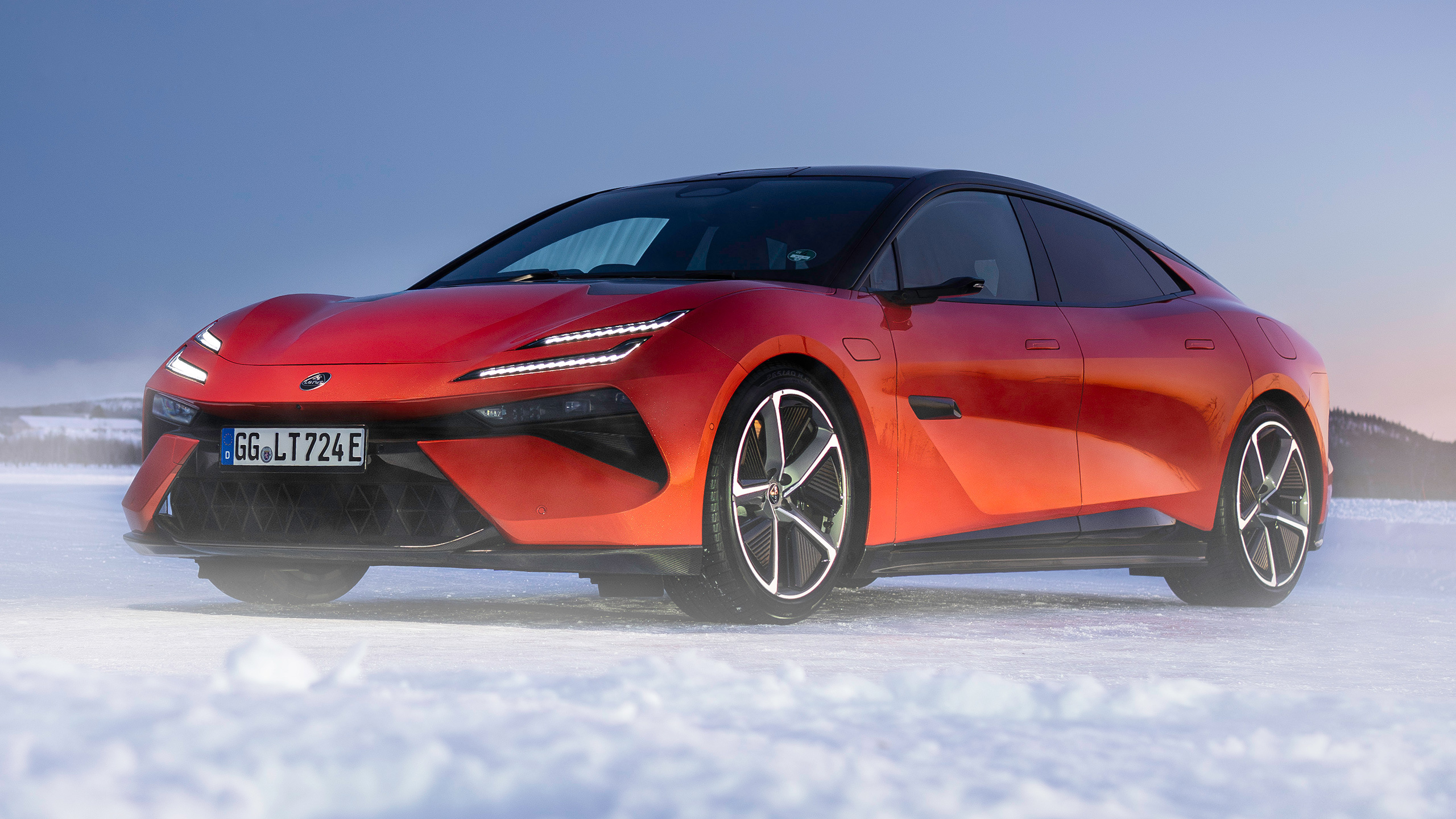- Lotus Emeya EV beat multiple other electric cars in an independent charging speed test.
- China-built sedan recharged from 10-80 percent in 14 minutes and reached a peak charging rate of 402kW.
- Emeya charged faster than other high-rate EVs like the Hyundai Ioniq 5, but still took five times as long as a combustion car would.
A zero to 62 mph (100 km/h) time of less than 2.8 seconds means the Lotus Emeya is undeniably a fast car. But accelerating is only one thing it does quickly. Charging is another. An Emeya recently beat a load of other fast-filling EVs in a charging competition, topping up its 102 kWh battery from 10-80 percent in just 14 minutes.
Hooked up to a 400 kW DC charger, the four-door coupe-sedan recorded a peak charging speed of 402 kW, according to the P3 Group, and an average charge speed of 331 kW. Those are impressive numbers in an era when the fastest-charging electric VWs can’t swallow more than 200 kW, and plenty of EVs are much slower than that.
Related: Lotus Emeya Configurator And Prices Go Live, Outmuscles And Undercuts Porsche Taycan Turbo
Even Porsche’s newly facelifted Taycan isn’t officially rated at more than 320 kW peak, though we don’t know what its true figure is because it wasn’t included in P3’s test. Besides the Lotus, P3 tested the XPeng G9 RWD Long Range, Kia EV9 RWD, Hyundai Ioniq 6 RWD, Nio ET5 Touring Long Range, Mercedes EQS 450+, Genesis G80 Electrified, BMW i7 eDrive50, Tesla Model Y RWD Long Range and BYD Atto 3.
P3’s charts show that despite the Hyundai Group EVs being feted for their supposedly rapid-charging 800-volt architecture, they couldn’t get close to the Emeya’s peak charge rate. The only EV that did was the XPeng G9, though that was still some way off with a peak of 320 kW.
A few other interesting things to note on the graph are that the various Hyundai Group cars all have very different charging curves, the Emeya’s sharp dip and then quick recovery at the 25-percent mark (the result of increased temperature, the report says), and how its charge rate falls off quickly. By 75 percent full, the charge-rate gap between the Lotus and the other cars has closed, but it’s still the best of the bunch.
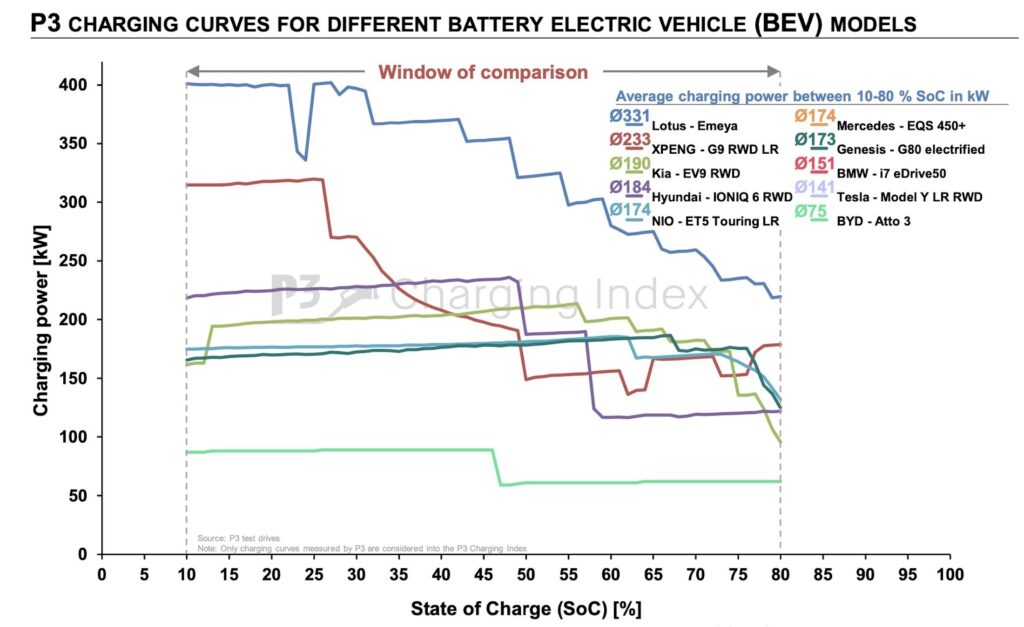
By contrast, the XPeng, which starts off strongly, falls behind all but the snail-slow BYD Atto 3 at the halfway mark, converting its 320 kW peak rate to an average of only 233 kW, though it does recover as the battery comes close to 80 percent full.
The Emeya’s rapid charge rate allows it to add up to 193 miles (310 km) of driving range in just 10 minutes, though that’s only if it’s hooked up to a super-fast 400 kW charger, which isn’t that common. And it’s still much slower than the fill time for a fast ICE sedan like a Porsche Panamera, which could take on enough fuel for a 193-mile trip in less than two minutes.






